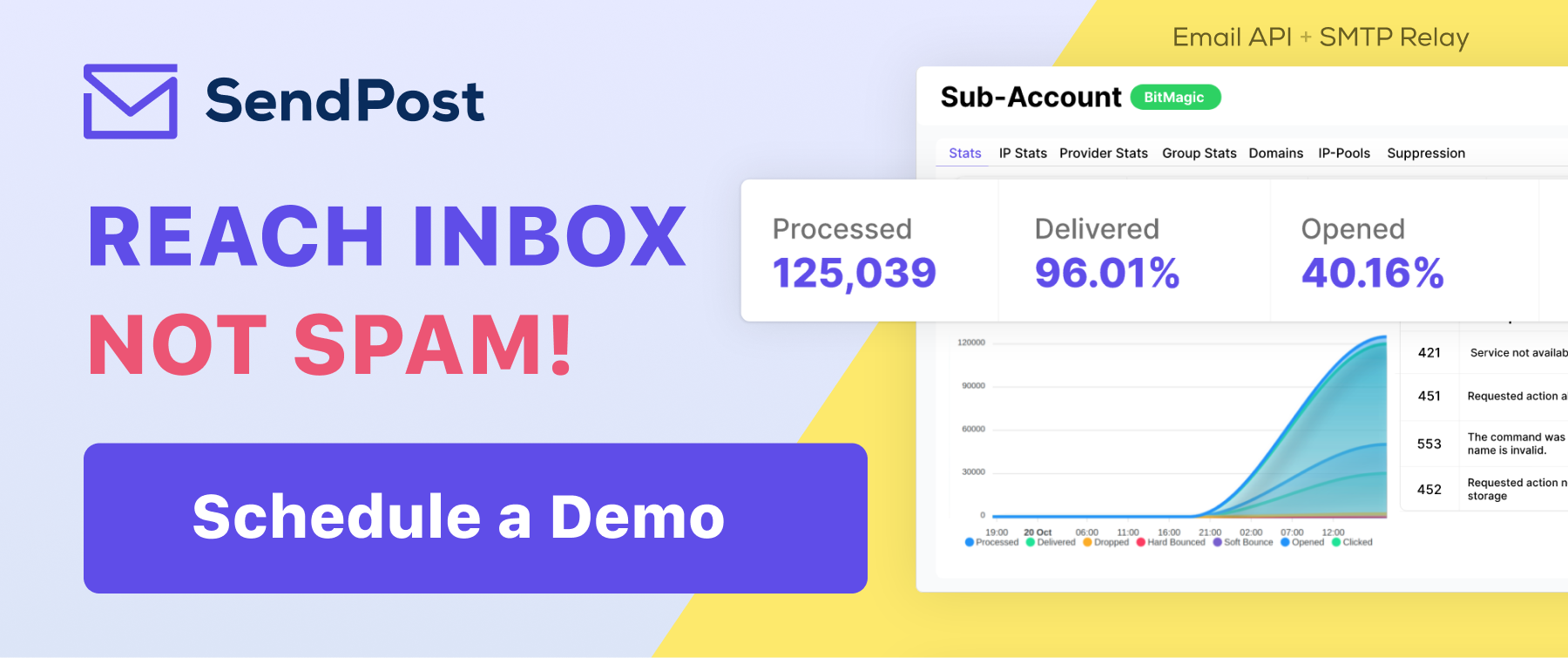
How to Fix Deliverability on Platforms (Yahoo, Google, etc.)
In email marketing, getting your message into recipients' inboxes is half the battle – and often the toughest half. Savvy marketers know that deliverability isn't just important; it's the bedrock upon which successful email campaigns are built. But here's the rub: the email landscape is shifting beneath our feet.
Yahoo, Gmail, Outlook – the big players in the email game – they're not static entities. Far from it. These platforms are living, breathing ecosystems, constantly evolving their algorithms and beefing up security measures. It's enough to make even seasoned email marketers break out in a cold sweat. Keeping pace with these changes? It's not just challenging; it can feel like you've taken on a second career.
We've got your back though. In this guide, we're rolling up our sleeves and diving elbow-deep into the nitty-gritty of email deliverability. So, grab a coffee (or your beverage of choice), and let's untangle this deliverability knot together.
Table of Contents
Common Deliverability Issues on Major Platforms
Yahoo: The Cautious Gatekeeper
Yahoo Mail, known for its stringent filtering, presents unique challenges. A few of these include, but aren’t limited to:
- IP Reputation Concerns: Yahoo is particularly sensitive to the reputation of sending IP addresses. A poor IP reputation can lead to immediate filtering or blocking of your emails.
- Content Triggers: Yahoo’s content filters are notoriously strict. Even seemingly innocent words or phrases can trigger spam flags.
- Engagement Metrics: Low open and click-through rates can quickly lead to deliverability issues on Yahoo.
Gmail: The Engagement Enthusiast
Gmail, with its tabbed inbox and sophisticated algorithms, focuses heavily on user engagement. This causes issues like:
- Inbox Categorization: Emails often end up in the Promotions or Updates tabs, reducing visibility and engagement.
- Sender Reputation: Gmail maintains a sender reputation score that can significantly impact deliverability.
- User Interactions: Gmail closely monitors how users interact with your emails, using this data to determine future inbox placement.
Outlook: The Corporate Guardian
Finally, Outlook, popular in business environments, has its own set of challenges. Here are just three of them:
- Attachment Scrutiny: Outlook is particularly cautious about attachments, which can trigger spam filters.
- Image-to-Text Ratio: Emails with too many images compared to text content are more likely to be flagged.
- Authentication Requirements: Outlook places a high emphasis on proper email authentication protocols.
Diagnosing Deliverability Problems
Before you can fix deliverability issues, you need to identify them. Let’s look at how to become an email detective.
Decoding Bounce Codes
Bounce codes are like secret messages from email servers. Here are some examples that might help you decrypt them:
- Soft Bounces (4.X.X): Temporary issues. The email server is saying, “Not now, but maybe later.”
- 4.2.1: The recipient’s mailbox is full. Try again later.
- 4.4.1: Connection timed out. The recipient’s server might be overwhelmed.
- Hard Bounces (5.X.X): Permanent problems. These are the “return to sender” of the email world.
- 5.1.1: The email address doesn’t exist. Time to clean your list!
- 5.7.1: The recipient’s server rejected your email as spam.
Response Metrics: Your Deliverability Dashboard
Keep a close eye on these metrics to indicate if deliverability is an issue. For example, Open Rates, Click-Through Rates (CTR), and Unsubscribe Rates. It’s also a good idea to watch out for Spam Complaint Rates. High complaint rates are a red flag for ISPs, so it’s best to aim for a number below 0.1%.
It’s also worth noting that these metrics are interconnected. A sudden drop in open rates coupled with an increase in bounce rates could indicate a broader deliverability issue.
Platform-Specific Fixes: Authentication Methods
Now that we’ve identified the problems, let’s roll up our sleeves and fix them. Email authentication is your first line of defense against deliverability issues.
Let’s break down the key authentication methods and how to implement them for each major platform.
SPF (Sender Policy Framework)
SPF is like a guest list for your domain. It tells receiving servers which IP addresses are allowed to send email on behalf of your domain.
Here’s how to implement SPF:
- Create an SPF record in your domain’s DNS settings.
- The basic format is: v=spf1 ip4:YOUR_IP_ADDRESS -all
- Replace YOUR_IP_ADDRESS with your sending IP.
Keep in mind these platform-specific notes as well:
- Yahoo: Requires a valid SPF record for all senders.
- Gmail: Strongly recommends SPF and uses it in spam filtering decisions.
- Outlook: Places high importance on SPF for corporate email security.
DKIM (DomainKeys Identified Mail)
DKIM adds a digital signature to your emails, verifying that they haven’t been tampered with in transit.
Here’s how to implement DKIM:
- Generate a public-private key pair.
- Add the public key to your DNS records.
- Configure your email server to sign outgoing messages with the private key.

Platform-Specific Notes:
- Yahoo: Mandates DKIM for bulk senders.
- Gmail: Gives preference to DKIM-signed emails in spam filtering.
- Outlook: Uses DKIM as a factor in its SmartScreen filter.
DMARC (Domain-based Message Authentication, Reporting, and Conformance)
DMARC builds on SPF and DKIM, allowing you to tell receiving servers what to do if an email fails authentication.
To Implement DMARC, follow these steps:
- Create a DMARC record in your DNS settings.
- Start with a monitoring policy: v=DMARC1; p=none; rua=mailto:dmarc-reports@yourdomain.com
- Gradually tighten the policy as you gain confidence in your authentication setup.
Here are the platform-specific notes for DMARC implementation:
- Yahoo: Strongly encourages DMARC implementation.
- Gmail: Uses DMARC to improve accuracy of spam filtering.
- Outlook: Leverages DMARC for enhanced phishing protection.
Tools for Monitoring and Improving Email Deliverability
There are loads of tools available to help you monitor your performance and identify areas for improvement. Here are just three of them:
- Google Postmaster Tools: This free service provides valuable insights into how Gmail views your sending domain. It offers data on IP reputation, domain reputation, and encryption rates.
- Microsoft SNDS (Smart Network Data Services): For senders targeting Outlook.com recipients, SNDS is a must-have. It provides sender reputation data, and rates on spam complaints and invalid recipients.
- SendPost’s Email Deliverability Dashboard: Our own Email Deliverability Dashboard offers comprehensive monitoring across platforms. From real-time delivery rates to bounce tracking, we keep you informed as to what’s happening with your emails.

Email Deliverability FAQs
To help you further navigate email deliverability, we've compiled answers to some frequently asked questions. We did focus primarily on Google's email platform and general deliverability issues, but many of these ideals would impact Yahoo and Outlook as well.
Q: What factors affect Google email deliverability?
A: Google considers several key factors: sender reputation, email authentication (SPF, DKIM, DMARC), user engagement metrics (opens, clicks, replies), content quality, sending volume and consistency, and email list cleanliness. Each of these elements plays a crucial role in determining whether your emails make it to the inbox.
Q: How can I improve my email deliverability on Google?
A: To boost deliverability, implement proper authentication protocols, maintain a clean email list, send engaging content, use Google Postmaster Tools to monitor your reputation, maintain consistent sending patterns, and encourage recipients to add your email to their contacts. This multi-faceted approach addresses the key areas Google considers when determining email placement.
Q: How does Google determine if an email is spam?
A: Google's spam detection algorithm evaluates multiple factors: sender authentication, IP and domain reputation, user engagement history, email content and format, sending patterns, and the presence of suspicious links or attachments. It's a comprehensive assessment that aims to protect users while allowing legitimate emails through.
Q: What should I do if my emails are going to spam in Gmail?
A: If your emails are landing in spam, start by reviewing your authentication setup (SPF, DKIM, DMARC). Then, examine your content for potential spam triggers, focus on engaging your most active subscribers, and consider scaling back your sending volume if you've recently increased it. Use Google Postmaster Tools to identify specific issues, and don't hesitate to reach out to Gmail support if problems persist.
Putting It All Together: Your Deliverability Action Plan
Improving email deliverability isn’t a one-time task—it’s an ongoing process of monitoring, adjusting, and optimizing. Here’s a step-by-step action plan to boost your deliverability across all major platforms:
- Authenticate Your Emails: Implement SPF, DKIM, and DMARC for all sending domains.
- Clean Your List Regularly: Remove inactive subscribers and hard bounces at least every six months.
- Segment and Personalize: Tailor your content to improve engagement rates, which positively impacts deliverability.
- Monitor Your Metrics: Keep a close eye on your deliverability performance.
- Optimize Your Content: Craft compelling subject lines and valuable content to boost open and click-through rates.
- Maintain Consistent Sending Patterns: Sudden changes in volume or frequency can trigger spam filters.
- Test, Test, Test: Regularly conduct inbox placement tests to catch issues early.
With these steps, you can improve your email deliverability across all major platforms.
Want some help with this? At SendPost, we’re not just here to provide a service—we’re here to be your partner in email success. Our team of deliverability experts is always ready to help you troubleshoot issues and implement best practices.
Don’t let platform-specific issues hold you back any longer. Boost your email deliverability today—sign up for a demo and solve platform-specific issues fast!



